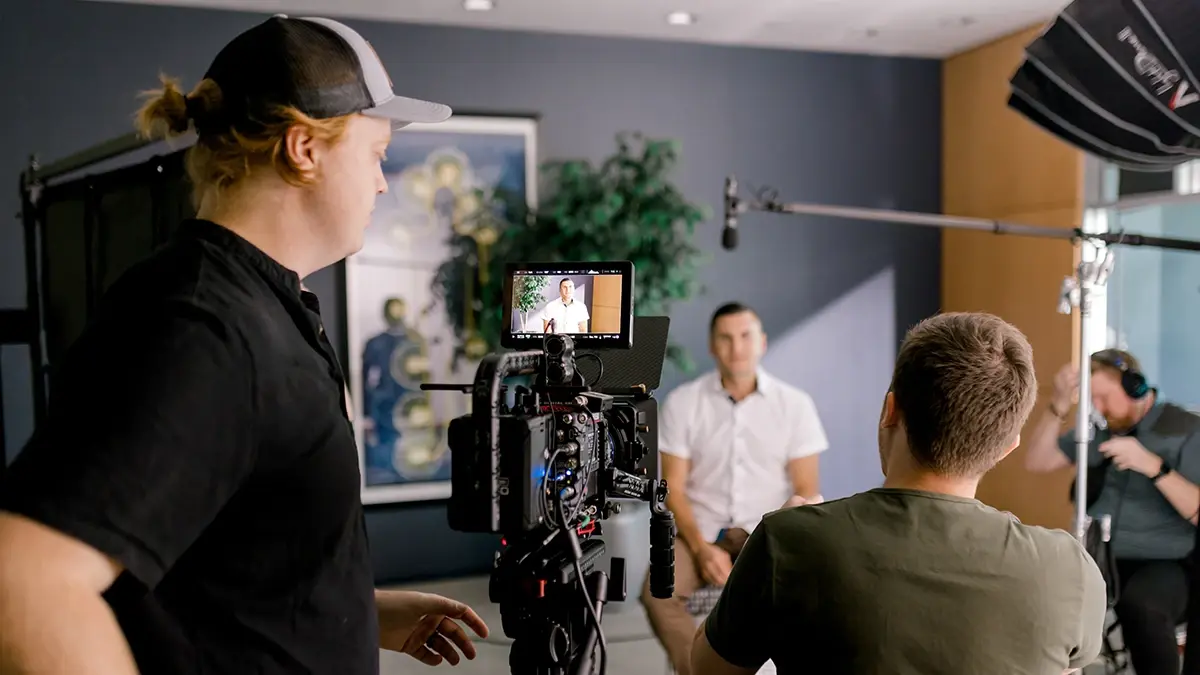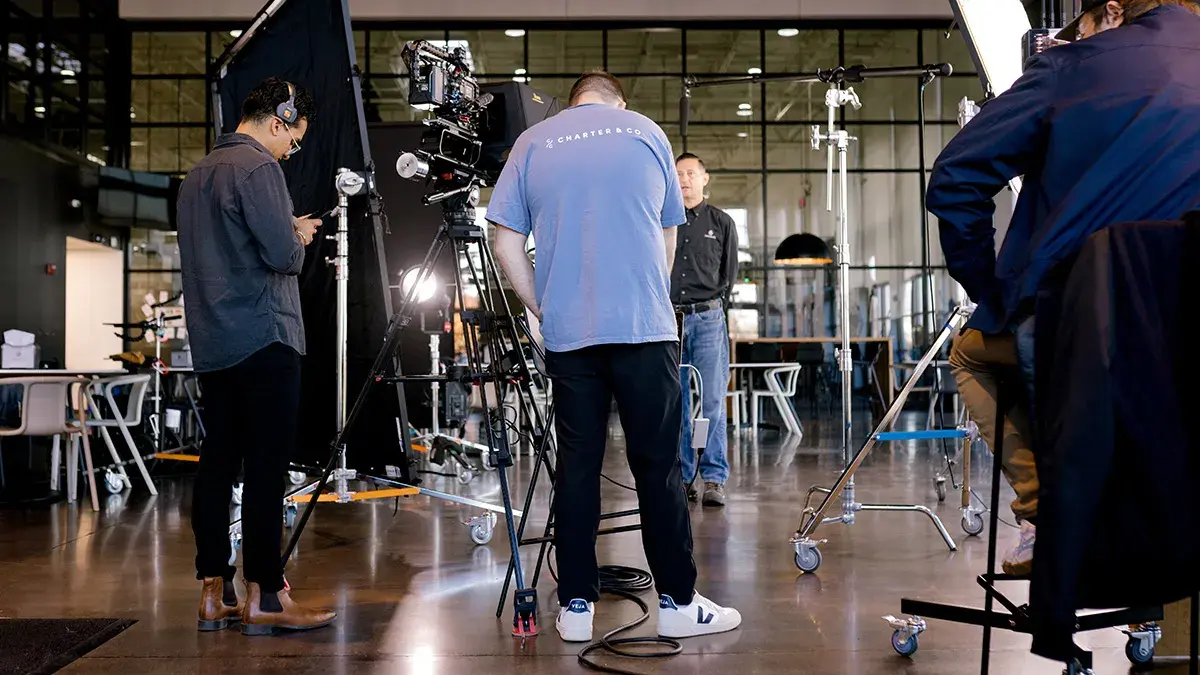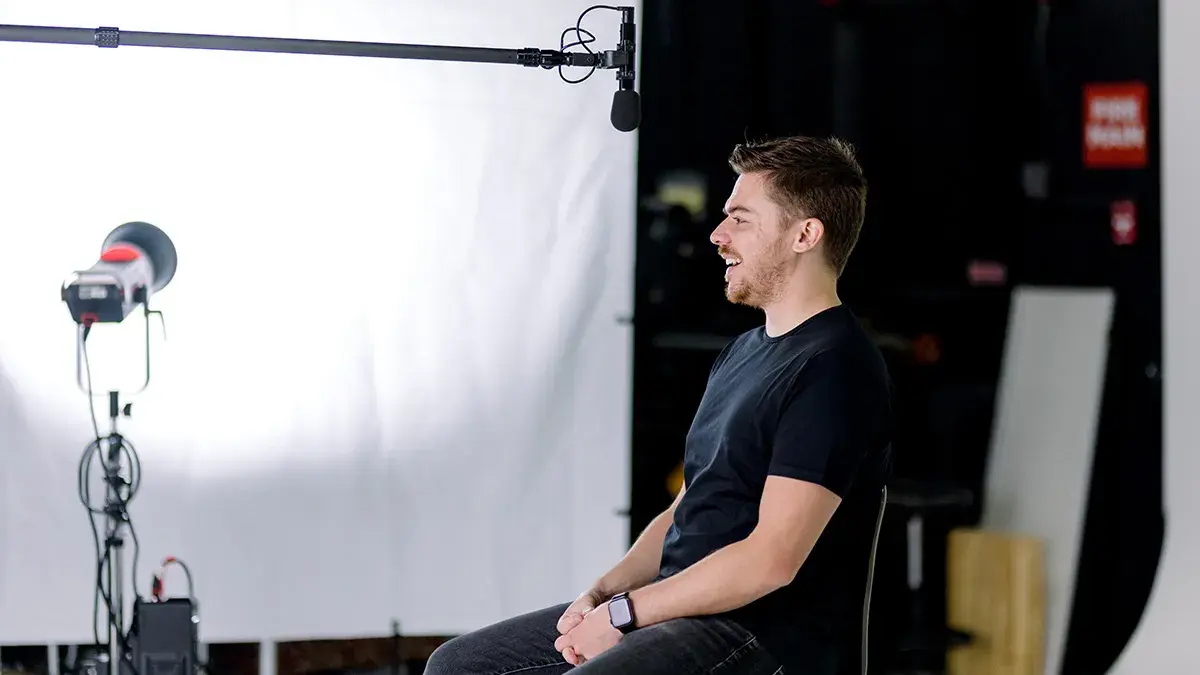B2B Video Marketing: Strategies and Best Practices for Success
Business-to-business (B2B) marketing relies heavily on long-term branding and lasting impressions. In today's digital age, video content remains one...
Everything Video Marketing→
Video marketing: What it is, why it matters, and how to do it.
Everything Video Production→
Your ultimate guide to video production: Tips and tricks for creating masterful videos.
Blog→
Helpful resources for all of your video production and marketing needs.
5 min read
Charter & Co. February 13, 2025

Educational video content can boost your marketing strategies and give you more control over your brand's narrative. These videos let you spotlight specific products, services, success stories, and industry trends in unique ways. While your target audience may have no interest in explicit ads, they're more likely to be happy to learn something new, especially if your video communicates it in a relevant way.
Educational video content consists of virtually any visual content that educates your audience, whether you're informing customers about a new product or simply discussing your industry. This content can include product demos, training videos, webinars, podcasts, commercials, case studies, and any other video that teaches viewers something new.
Instructional videos take viewers through specific steps to complete tasks, such as setting up an account, using equipment, or talking to clients. These types of educational videos are often essential for internal and external operations because they lay out exact guidelines and expectations.
Educational video content, on the other hand, can take many different forms. While this content can include instructional videos, many educational videos, such as demos and case studies, don't follow instructional or guideline formats at all. Rather than focusing on specific operations, they teach about different topics, such as success stories or industry trends.
To put it simply, all instructional videos are educational, but not all educational videos are instructional.
Educational videos range from short-form demos to long-form knowledge-sharing discussions. Understand your available options to identify the best way to deliver educational content in video.
These types of educational videos play directly to your primary consumer base in various ways. Product demos and customer success stories benefit your marketing strategy by informing current and potential customers about exactly what you offer. Such content can spread the word about your brand and combat misconceptions.
Customer education videos also include tutorials, onboarding videos, in-app animations, and other visuals that current customers will see. These videos engage your customer base and make their experience feel unique, especially if you use personalized video marketing. Additionally, videos and graphics will hold your customers' attention and highlight essential product details far better than just a block of text.
E-learning videos can benefit both your internal and your external training. Internally, educational video content can provide new hires and current employees with various types of essential training, including:
Externally, corporate e-learning and training videos can benefit your business-to-business (B2B) operations. For example, if you sell business software, you could develop training videos for companies that adopt your tools. Business leaders can then use those videos to train their staff rather than doing all of the training themselves.
Educational videos outside of your typical operations and marketing strategies can boost your brand's reach and credibility. Examples include:
Creating educational videos to increase viewer engagement and boost retention requires considering many variables, such as your audience and your precise messaging. Follow these steps to give your educational video content strategy everything it needs.
Consider who you want your educational video content ideas to reach, whether that's employees, current clients, or potential customers. Understand your target audience to assemble an appropriate production strategy, including the types of videos you'll need to make.
For example, a B2B video marketing strategy will benefit from professional, landscape-style videos that you can share on LinkedIn and your website. On the other hand, if you're marketing to young adults or general customers, you could have more luck with a short-form, portrait-style video appropriate for social media sharing.
In addition to your audience, you must also define your learning goals. Write down the exact message you want viewers to take away, and consider other key points you want to discuss, too. This can further help you identify your most beneficial video format, whether that's a short product demo or a webinar you can repost later.
Scripts, storyboards, and other pre-production tools let you plan and visualize every aspect of your video. An effective production plan guarantees you'll have everything you'll need when the cameras start recording. This way, you can maximize your time "on set" without worrying about dialogue or props.
Pre-production essentials include:
Verify that your script and production plan honor your brand identity and goals. Strategies for honing in on your business objectives and brand include:
The best videos end with a call to action (CTA) that encourages the viewer to apply what they learned to the real world. Great calls to action for educational video content include:
A professional video production company such as Charter & Co can help you with creating educational video content to increase viewer engagement. With years of production experience, the right team will know how to capture the best-looking footage, taking lighting, framing, and all other variables into consideration. Additionally, post-production teams can add color-grading, graphics, and audio descriptions to hook and maintain viewers.
Avoid these mistakes when developing educational video content:
Whether you need a product demo or a brand video, Charter & Co knows how to produce educational video content that keeps viewers engaged. Our team of experts will walk you through every stage of production, from storyboarding through editing, to maximize every word of your message. Get in touch now to get started.

Business-to-business (B2B) marketing relies heavily on long-term branding and lasting impressions. In today's digital age, video content remains one...

Product demos and other marketing videos combine visuals, voice-overs, animation, and other attention-grabbing elements. They can leave strong,...

Business-to-business (B2B) marketing must appeal to company decision-makers rather than consumers. This often requires different practices and types...